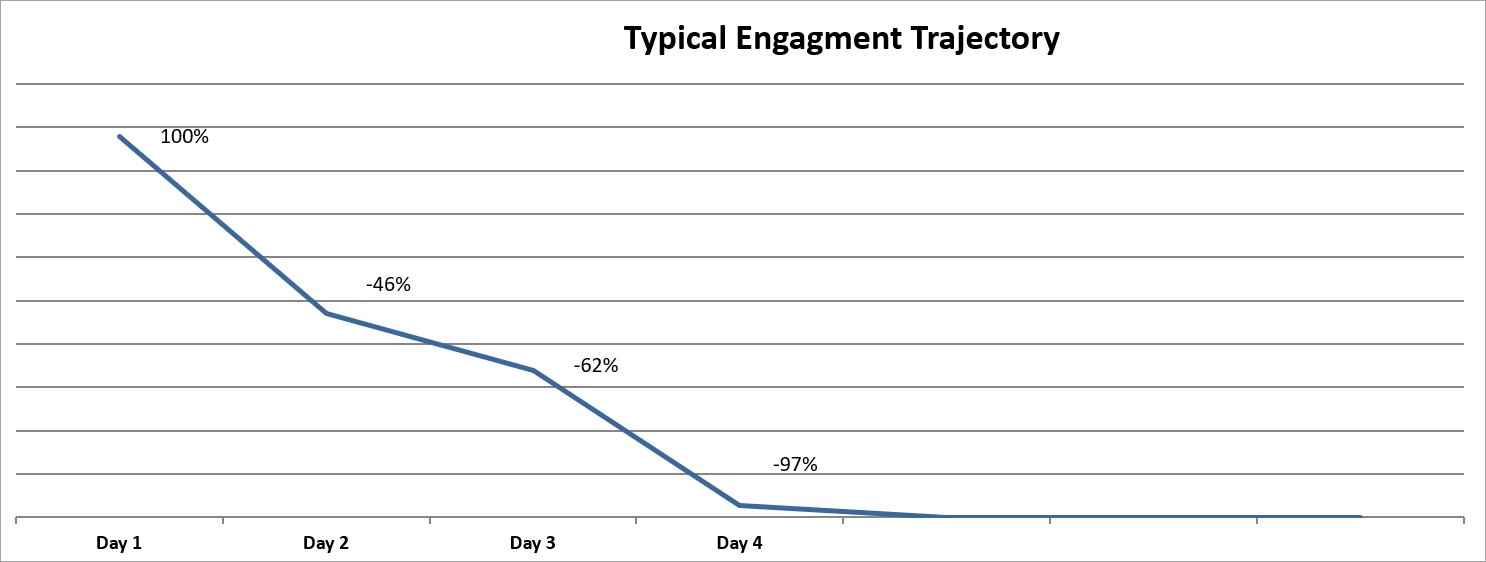
Act I: How can design elements be optimized to improve UX and engagement?

Step 1. Use language, voice, and tone that resonates with our users and aligns with our brand.

Step 2. Design content experiences that speak to them.

Step 3. Be the leader and ...

Step 4: Own the journey.

Act II: Measure everything

Step 1. Look for patterns.

Step 2. Look for patterns across time.

Step 3. Look for patterns across audiences.

Step 4. Validate that this is one story.

Step 5. Validate that content design and strategy can create more relevant, resonant stories for users and stakeholders.

Act III: Be the product

Step 1. Develop user-centered content that supports product strategies.

Step 2. Develop and iterate on new user-centered interfaces.

Step 3. Document and measure experiences end to end. What stories do they tell?

Step 4. Explore how content + product can scale to tell even bigger stories.

Act IV: Deepen content designs and strategies while developing new product designs

Step 1. Revisit and refresh continuously.

Step 2. Envision, execute on, and measure new experiences.

Step 3. Go big, launching new experiences, products, and even industries.

Step 4. Demonstrate how content design and strategy can ...

advance accessibility and inclusivity ...

and bring brand values to life ...

across segments and need points.

Step 5. Develop workflows that create cohesion and drive engagement ...

by iterating, testing ...

documenting, and sharing ...

what really works and why (aka best practices).

Act V: Measure and drive for continuous, strategic improvements that deliver for users and on ROI

Step 1. Use data to demonstrate what resonates with users and delivers on ROI.

Step 2. Like a spiral staircase, data-driven content designs and strategies advance products by ...

continuously empowering users and delivering on brand promise.






























